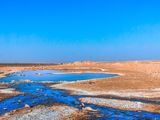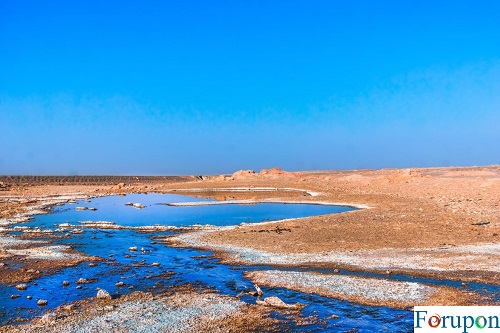Water Table
For upon |The water table is the boundary between the unsaturated zone and the saturated zone underground. groundwater fills any spaces between sediments and within the rock.
Fresh Water Spring Iran
A freshwater spring in the desert of Iran. These springs show the importance of sustaining life in the harshest parts of Earth.
The underground boundary between the soil surface and the area where groundwater saturates spaces between sediments and cracks in the rock. Water pressure and atmospheric pressure are equal at this boundary.
The soil surface above the is called the unsaturated zone, where both oxygen and water fill the spaces between sediments. The unsaturated zone is also called the zone of aeration due to the presence of oxygen in the soil. Underneath the water, the table is the saturated zone, where water fills all spaces between sediments. The saturated zone is bounded at the bottom by impenetrable rock.
The shape and height of the are influenced by the land surface that lies above it; it curves up under hills and drops under valleys. The groundwater found below comes from precipitation that has seeped through surface soil. Springs are formed where they naturally meet the land surface, causing groundwater to flow from the surface and eventually into a stream, river, or lake.
Fresh Water Spring
The water table level can vary in different areas and even within the same area. Fluctuations in the water table level are caused by changes in precipitation between seasons and years. During late winter and spring, when the snow melts and precipitation is high, There is a lag, however, between when precipitation infiltrates the saturated zone and when the rises. This is because it takes time for water to trickle through spaces between sediments to reach the saturated zone, although the process is helped by gravity. Irrigation of crops can also cause them to rise as excess water seeps into the ground.
During the summer months, the water table tends to fall, due in part to plants taking up water from the soil surface before it can reach the water table. The water table level is also influenced by human extraction of groundwater using wells; groundwater is pumped out for drinking water and irrigating farmland. The depth of the water table can be measured in existing wells to determine the effects of season, climate, or human impact on groundwater. The water table can actually be mapped across regions using measurements taken from wells.
If water is not extracted through a well in a sustainable manner, the water table’s may drop permanently. This is starting to be the case around the world. Some of the largest sources of groundwater are being depleted in India, China, and the United States to the point where they cannot be replenished. Groundwater depletion occurs when the rate of groundwater extraction through wells is higher than the rate of replenishment from precipitation.

A freshwater spring in the desert of Iran. These springs show the importance of water tables in sustaining life in the harshest parts of Earth.
Photograph by Ulf Huebner/Alamy
The article was originally published here.


Comments are closed.